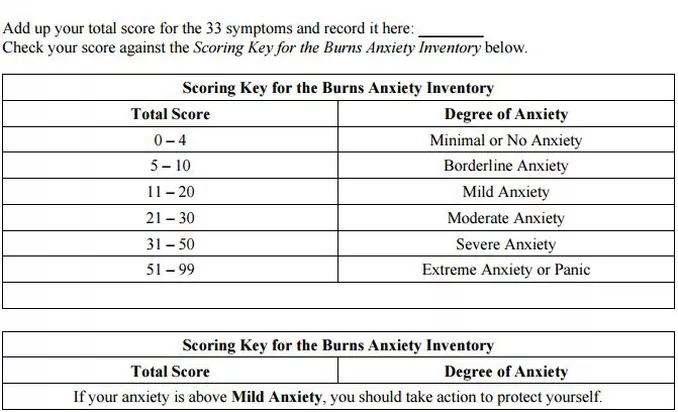Anxiety can cause anxiety, fear, nervousness, and apprehension that don’t go away and occur without any specific reason. It can take a toll on psychological health and can also interfere with your day-to-day activities. The Burns Anxiety Inventory (BAI) is an evaluation tool for measuring anxiety. It was developed by a psychiatrist and author named David Burns.
This inventory or checklist can be administered by yourself or a clinician. It can help an individual in monitoring his or her anxiety over time and be well informed about anxiety symptoms. It also helps clinicians in the diagnosis of various anxiety disorders.
Know here about its importance, how it works, how frequently should the inventory be taken, and how it can aid the treatment of anxiety.
Importance of Burns Anxiety Inventory

Several psychological tools like Multidimensional Anxiety Scale for Children and the GAD (Generalized Anxiety Disorder)-7 instrument of Spitzer and others. One of the most common and accessible tools, the Burns Anxiety Inventory can be easily self-administered. By rating the overall anxiety symptoms in numbers, an individual can assess his anxiety level each day to know how it fluctuates and even check how is the treatment progress.
What Does This Inventory Comprise of?

This inventory is a checklist of 33 symptoms that are associated with anxiety. They are further divided into three categories, namely anxious thoughts, anxious feelings, and physical symptoms.
A person who takes the assessment rates himself on a scale of zero to three for every symptom. Zero means not at all, one means somewhat, two means moderately and three means a lot. The “Anxious Feelings” category comprises 6 symptoms, including apprehension or a sense of impending doom, sudden unexpected panic spells, and others.
The “Anxious Thoughts” category comprises 11 symptoms, including frightening fantasies or daydreams, difficulty concentrating, and others. And the last category “Physical Symptoms” includes 16 symptoms, including hot flashes or cold chills, restlessness or jumpiness, and others.
How Does the Scoring Work?

David Burns says that the entire checklist can be completed in not more than 2 minutes. For evaluating the anxiety level indicated on the checklist, every score is added up numerically. A score of 0-4 means minimal or no anxiety, 5-10 indicates borderline anxiety, 11-20 indicates mild anxiety, 21-30 means moderate anxiety, 31-50 indicates severe anxiety and a score of 51-99 could mean extreme anxiety or panic.
How Frequently Should the Inventory Be Taken?
According to David Burns, this inventory should be taken once or more, in a week. He also recommends noticing whether you feel specifically anxious or calm during the time you take inventory to measure the anxiety range.
Consider telling your score to the therapist to help in proper diagnosis and treatment. During the treatment that involves medication, physiotherapy, or both, tracking the anxiety over days, weeks and months can provide useful information related to how effective a course of treatment is.
How Can it Aid the Treatment Process?

Based on the score of a series of Burn Anxiety Inventories, the treatment is recommended. The psychotherapists of all modalities work with anxiety. Cognitive-behavioral therapy is a popular method to treat anxiety and panic but psychodynamic methods are known to be less effective. In the case of some people, the medication helps in managing anxiety and panic. A psychiatrist can best analyze which type of drug would be best for treating a particular set of symptoms.
Image Sources:
1) netdna-ssl
2) yumpu
3) wixstatic
4) amazonaws

